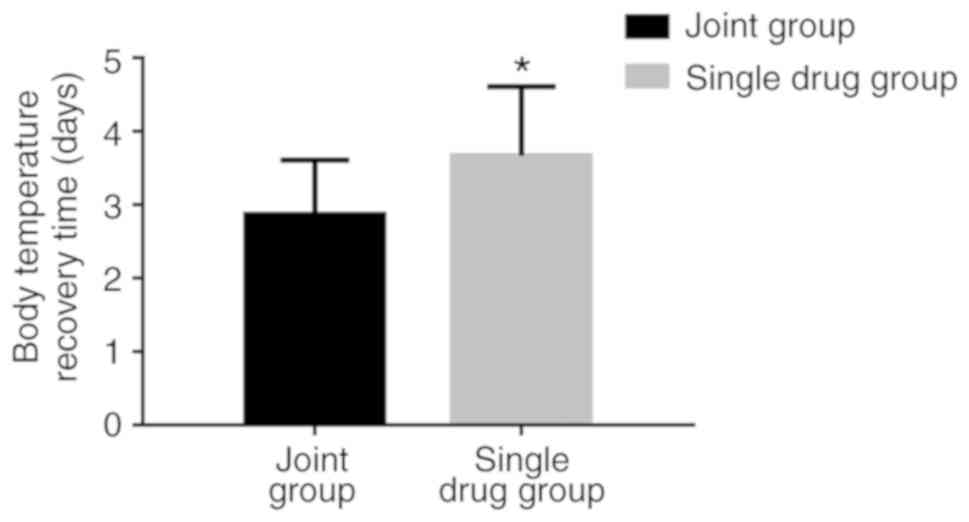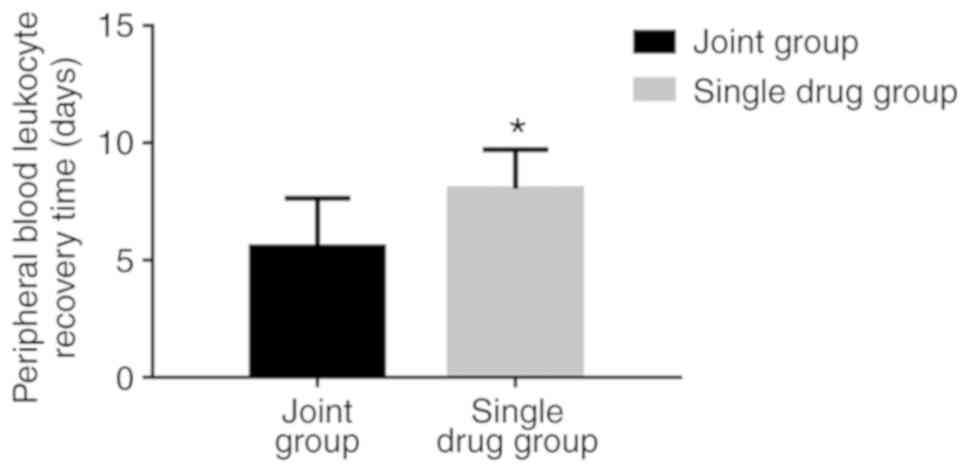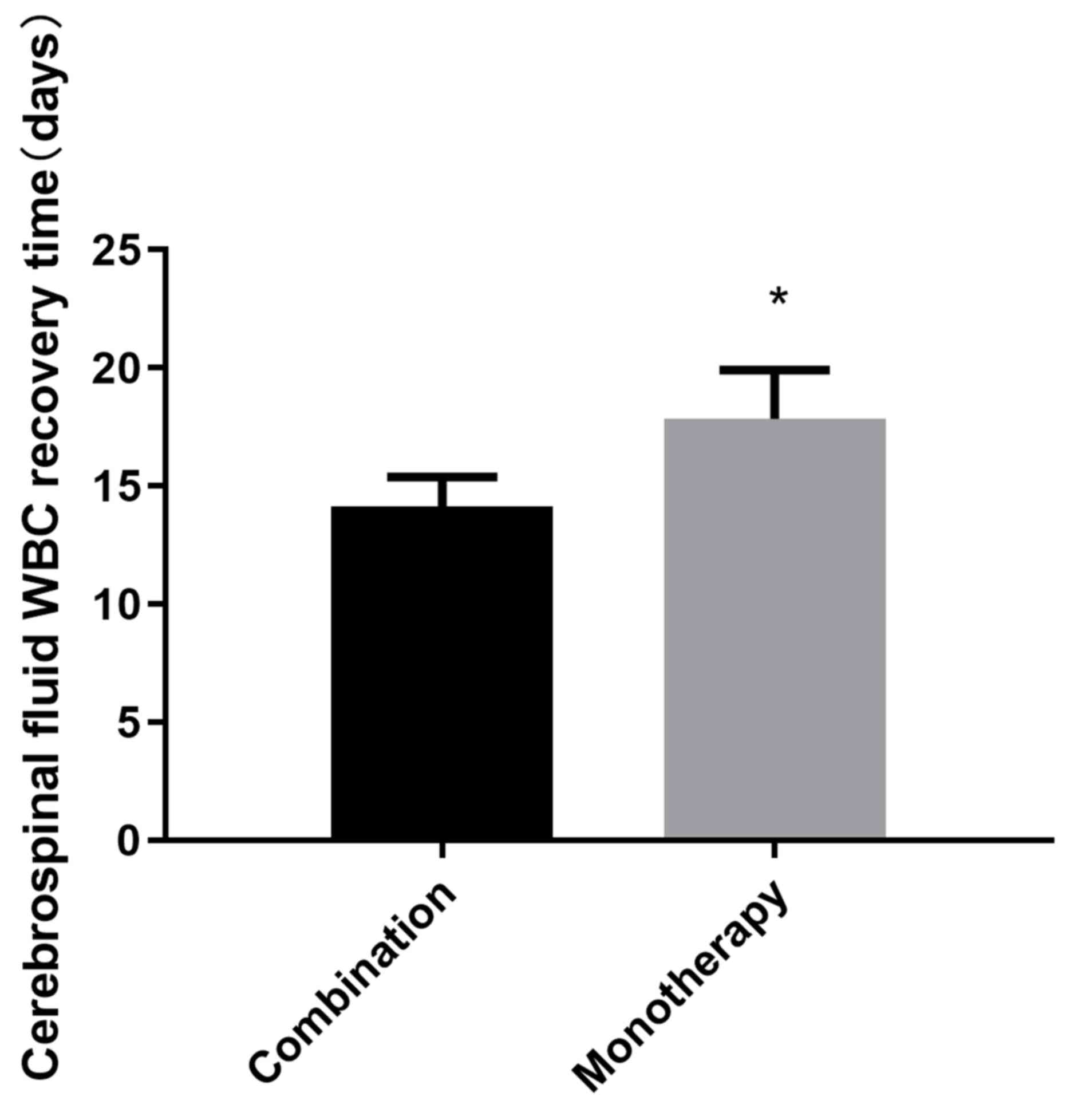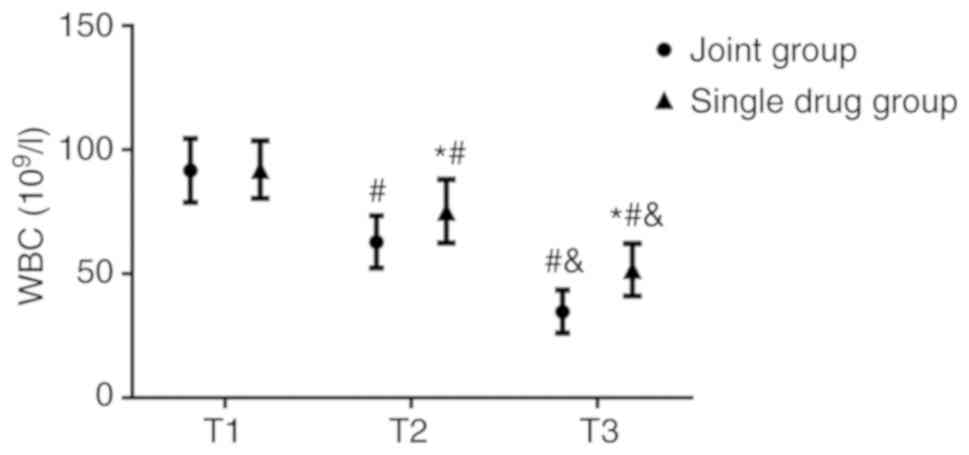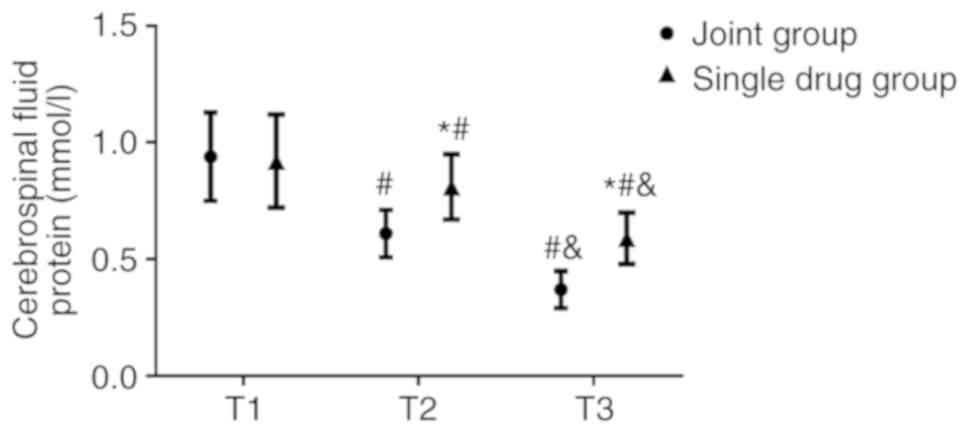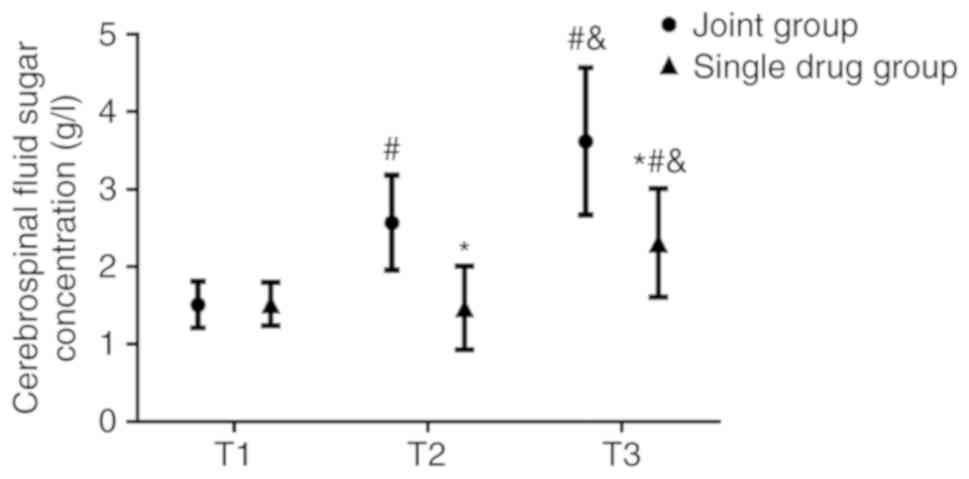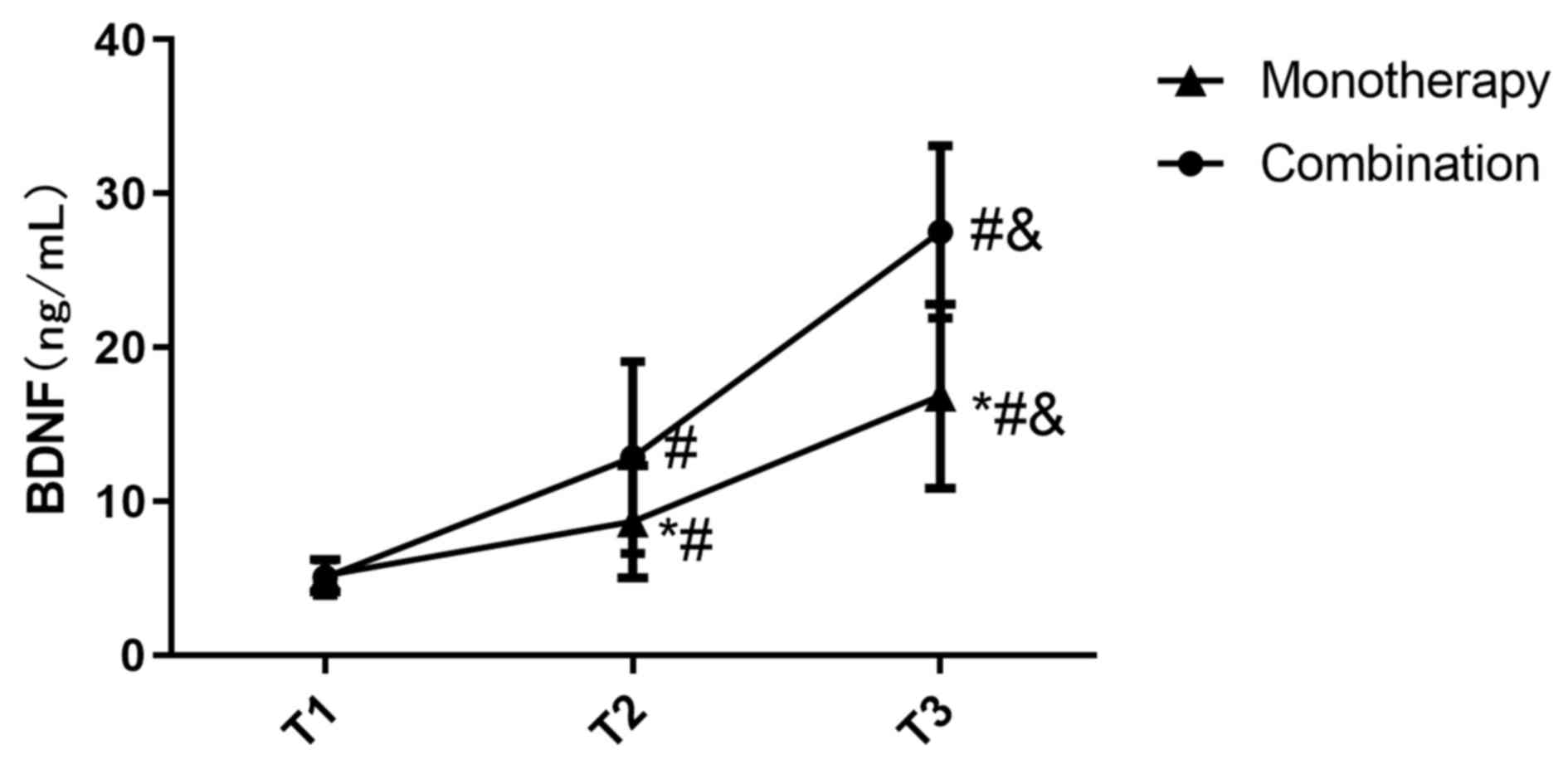|
1
|
Qian Y, Wong CC, Lai SC, Lin ZH, Zheng WL,
Zhao H, Pan KH, Chen SJ and Si JM: Klebsiella pneumoniae
invasive liver abscess syndrome with purulent meningitis and septic
shock: A case from mainland China. World J Gastroenterol.
22(2861)2016.PubMed/NCBI View Article : Google Scholar
|
|
2
|
He Z, Li X and Jiang L: Clinical analysis
on 430 cases of infantile purulent meningitis. Springerplus.
5(1994)2016.PubMed/NCBI View Article : Google Scholar
|
|
3
|
Agossou J, Adédémy JD, Noudamadjo A,
Houessou MRM, Tsawlassou P, Assogba R, Sagbo GG, Lalya HF, Alao MJ,
Bankolé H, et al: Serotypes of bacteria encountered in childhood
purulent meningitis in children in Parakou (Benin) in 2011. Open J
Pediat. 6(109)2016.
|
|
4
|
Du H, Liu E, Xu C, Zhao S, Xiang H and Li
Z: Prognostic value of funisitis and/or chorionic vasculitis
compared to histologic chorioamnionitis in full-term infants. The J
Matern Fetal Neonatal Med. 30:169–173. 2017.PubMed/NCBI View Article : Google Scholar
|
|
5
|
Liu C and Zhao D: Correlation between CD64
and PCT levels in cerebrospinal fluid and degree of hearing
impairment sequelae in neonates with purulent meningitis. Exp Ther
Med. 14:5997–6001. 2017.PubMed/NCBI View Article : Google Scholar
|
|
6
|
Lan SY, Lin JJ, Hsia SH, Wang HS, Chiu CH
and Lin KL: CHEESE Study Group: Analysis of fulminant cerebral
edema in acute pediatric encephalitis. Pediatr Neonatol.
57:402–407. 2016.PubMed/NCBI View Article : Google Scholar
|
|
7
|
Ai J, Xie Z, Liu G, Chen Z, Yang Y, Li Y,
Chen J, Zheng G and Shen K: Etiology and prognosis of acute viral
encephalitis and meningitis in Chinese children: A multicentre
prospective study. BMC Infect Dis. 17(494)2017.PubMed/NCBI View Article : Google Scholar
|
|
8
|
Yimer EM, Hishe HZ and Tuem KB:
Repurposing of the β-lactam antibiotic, ceftriaxone for
neurological disorders: A review. Front Neurosci.
13(236)2019.PubMed/NCBI View Article : Google Scholar
|
|
9
|
Xu W, Yin M, Huo MC, Yan JL, Yang Y and
Liu CF: Changes in blood CD4+ CD25+
regulatory T cells in children with severe purulent meningitis.
Zhongguo Dang Dai Er Ke Za Zhi. 18:821–825. 2016.(In Chinese).
PubMed/NCBI
|
|
10
|
Rahman M, Khan MA, Abdul Rub M, Hoque MA
and Asiri AM: Investigation of the effect of various additives on
the clouding behavior and thermodynamics of polyoxyethylene (20)
sorbitan monooleate in absence and presence of ceftriaxone sodium
trihydrate drug. J Chem Eng Data. 62:1464–1474. 2017.
|
|
11
|
Rahman M, Khan MA, Rub MA and Hoque MA:
Effect of temperature and salts on the interaction of
cetyltrimethylammonium bromide with ceftriaxone sodium trihydrate
drug. J Mol Liquids. 223:716–724. 2016.
|
|
12
|
Patel N, Lalwani D, Gollmer S, Injeti E,
Sari Y and Nesamony J: Development and evaluation of a calcium
alginate based oral ceftriaxone sodium formulation. Prog Biomater.
5:117–133. 2016.PubMed/NCBI View Article : Google Scholar
|
|
13
|
Guo X, Wan J, Yu X and Lin Y: Study on
preparation of SnO2-TiO2/Nano-graphite
composite anode and electro-catalytic degradation of ceftriaxone
sodium. Chemosphere. 164:421–429. 2016.PubMed/NCBI View Article : Google Scholar
|
|
14
|
Fu Y, Jing J, Ren T and Zhao H:
Intratympanic dexamethasone for managing pregnant women with sudden
hearing loss. J Int Med Res. 47:377–382. 2019.PubMed/NCBI View Article : Google Scholar
|
|
15
|
Dileep A, Khan NB and Sheikh SS: Comparing
neonatal respiratory morbidity in neonates delivered at term by
elective Caesarean section with and without dexamethasone:
Retrospective cohort study. J Pak Med Assoc. 65:607–611.
2015.PubMed/NCBI
|
|
16
|
Tange M, Yoshida M, Nakai Y and Uchida T:
The role of an impurity in ceftriaxone sodium preparation for
injection in determining compatibility with calcium-containing
solutions. Chem Pharm Bull (Tokyo). 64:207–214. 2016.PubMed/NCBI View Article : Google Scholar
|
|
17
|
Di Cicco M, Bellino EM, Marabotti A, Luti
L, Peroni DG and Baroncelli GI: Acute dacryocystitis with giant
lacrimal abscess: A case report. Ital J Pediatr.
46(15)2020.PubMed/NCBI View Article : Google Scholar
|
|
18
|
Guo LY, Zhang ZX, Wang X, Zhang PP, Shi W,
Yao KH, Liu LL, Liu G and Yang YH: Clinical and pathogenic analysis
of 507 children with bacterial meningitis in Beijing, 2010-2014.
Int J Infect Dis. 50:38–43. 2016.PubMed/NCBI View Article : Google Scholar
|
|
19
|
Rodriguez WJ, Ross S, Khan WN and
Goldenberg R: Clinical and laboratory evaluation of cefamandole in
infants and children. J Infect Dis. 137:S150–S154. 1978.PubMed/NCBI View Article : Google Scholar
|
|
20
|
Ekhtiyari E, Barzegar M, Mehdizadeh A,
Shaaker M, Ghodoosifar S, Abhari A and Darabi M: Differential fatty
acid analysis of cerebrospinal fluid in infants and young children
with suspected meningitis. Child's Nerv Sys. 33:111–117.
2017.PubMed/NCBI View Article : Google Scholar
|
|
21
|
Kępa L, Oczko-Grzesik B, Stolarz W and
Boroń-Kaczmarska A: Cerebrospinal fluid ferritin concentration in
patients with purulent, bacterial meningitis-own observations.
Przegl Epidemiol. 70:593–603. 2016.(In English, Polish). PubMed/NCBI
|
|
22
|
Sharma VD, Singla A, Chaudhary M and
Taneja M: Population pharmacokinetics of fixed dose combination of
ceftriaxone and sulbactam in healthy and infected subjects. AAPS
PharmSciTech. 17:1192–1203. 2016.PubMed/NCBI View Article : Google Scholar
|
|
23
|
Dimopoulos MA, Moreau P, Palumbo A, Joshua
D, Pour L, Hájek R, Facon T, Ludwig H, Oriol A, Goldschmidt H, et
al: Carfilzomib and dexamethasone versus bortezomib and
dexamethasone for patients with relapsed or refractory multiple
myeloma (ENDEAVOR): A randomised, phase 3, open-label, multicentre
study. Lancet Oncol. 17:27–38. 2016.PubMed/NCBI View Article : Google Scholar
|
|
24
|
Jha A, Dwivedi NC, Verma SK and Chaurasia
AK: Role of cerebrospinal fluid, creatine kinase and lactate
dehydrogenase enzyme levels in diagnostic and prognostic evaluation
of tubercular and pyogenic meningitis. Int J Adv Med. 4:824–829.
2017.
|
|
25
|
Scoppetta TLPD, da Rocha AJ and Nunes RH:
Meningitis, empyema, and brain abscess in adults. In: Editors.
Critical Findings in Neuroradiology. Springer. 141–154. 2016.
|
|
26
|
Ahmed R: Gestational dexamethasone alters
fetal neuroendocrine axis. Toxicol Lett. 258:46–54. 2016.PubMed/NCBI View Article : Google Scholar
|
|
27
|
Panackal AA, Chittboina P, Marr KA,
Bielekova B and Williamson PR: Dexamethasone in cryptococcal
meningitis. N Engl J Med. 375(188)2016.PubMed/NCBI View Article : Google Scholar
|
|
28
|
Miao YL, He P, Zhang WX, Zhang WZ, Feng M
and Ni Y: Anti-inflammatory mechanism of Crepis crocea based on
NF-κB signaling pathway and ~1H-NMR metabonomics. Zhongguo Zhong
Yao Za Zhi. 45:946–954. 2020.(In Chinese). PubMed/NCBI View Article : Google Scholar
|
|
29
|
Barna L, Walter FR, Harazin A, Bocsik A,
Kincses A, Tubak V, Jósvay K, Zvara Á, Campos-Bedolla P and Deli
MA: Simvastatin, edaravone and dexamethasone protect against
kainate-induced brain endothelial cell damage. Fluids Barriers.
17(5)2020.PubMed/NCBI View Article : Google Scholar
|
|
30
|
Zhang JC, Yao W and Hashimoto K:
Brain-derived neurotrophic factor (BDNF)-TrkB signaling in
inflammation-related depression and potential therapeutic targets.
Curr Neuropharmacol. 14:721–731. 2016.PubMed/NCBI View Article : Google Scholar
|
|
31
|
El Morsy EM and Mae A: Protective effects
of lycopene on hippocampal neurotoxicity and memory impairment
induced by bisphenol A in rats. Hum Exp Toxicol.
960327120909882:2020.PubMed/NCBI View Article : Google Scholar
|















